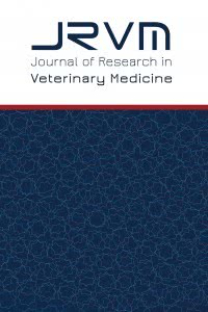Başlıca Biyoinformatik Algoritmaları için Web Ara yüzü ve Yeni Otomat Tabanlı Yaklaşık Desen Eşleştirme Yaklaşımı
A NEW AUTOMATA BASED APPROXIMATE STRING MATCHING APPROACH AND WEB INTERFACE FOR BIOINFORMATICS ALGORITHMS
___
- Pevsner, J. (2015) Bioinformatics and functional genomics, John Wiley & Sons, UK
- Smith, T.F. and Waterman, M.S. (1981) Identification of common molecular subsequences, Journal of Molecular Biology, Academic Press Incorporated, London, 40-48. doi: 10.1016/0022-2836(81)90087-5
- Needleman, S.B. and Wunsch, C.D. (1970) A general method applicable to the search for similarities in the amino acid sequence of two proteins, Journal of Molecular Biology, Academic Press Incorporated, London, 443-453. doi: 10.1016/0022-2836(70)90057-4
- Bishop, C. M. (2006) Machine learning and pattern recognition. Information Science and Statistics. Springer, Heidelberg.
- D'haeseleer, P. (2006) How does DNA sequence motif discovery work?. Nature biotechnology, 24(8), 959-961
- Özcan, G., and Ünsal, O. S. (2015). Fast bitwise pattern-matching algorithm for DNA sequences on modern hardware. Turkish Journal of Electrical Engineering & Computer Sciences, 23(5), 1405-1417.
- Langmead, B., and Salzberg, S. L. (2012) Fast gapped-read alignment with Bowtie 2. Nature methods, 9(4), 357.
- Knuth, D.E., Morris, J.H and Pratt, W.R. (1977) Fast Pattern Matching in Strings, Journal of Molecular Biology, SIAM Journal on Computing, Philadelphia, 323-350. doi: 10.1137/0206024
- Boyer, R.S., Moore, J.S and Pratt, W.R. (1977) A Fast String Searching Algorithm, Journal of Molecular Biology, Communications of the ACM, New York, 762-772. doi: 10.1145/359842.359859
- Alluzen, C., Crochemore, M. and Raffinot, M. (1999) Factor Oracle: A New Structure for Pattern Matching, SOFSEM’99: Theory and Practice of Informatics, Lecture Notes in Computer Science, Berlin, 291-306. doi: 10.1007/3-540-47849-3_18
- Ji, H. and Shendure, J. (2008) Next-generation DNA sequencing, Nature biotechnology volume 26, Nature Publishing Group, London, 1135-1145. doi: 10.1038/nbt1486
- Burrows, W. and Wheeler, D. J. (1994) A block-sorting lossless data compression algorithm, Technical Report 124, Digital Equipment Corporation, Digital Equipment Corporation, California.
- Durbin, R., Eddy, S. R., Krogh, A. and Mitchison, G. (1998) Biological Sequence Analysis: Probabilistic Models of Proteins and Nucleic Acids, Cambridge University Press, Cambridge.
- Navarro, R. and Raffinot, M. (2002) Flexible Pattern Matching in String, The press Syndicate of The University of Cambridge, Cambridge.
- Özcan, G. (2016) Detection of P53 Consensus Sequence: A Novel String Matching With Classes Algorithm, Uludag University Journal of The Faculty of Engineering 21 (2), Bursa, 269-282.
- ISSN: 2148-4147
- Yayın Aralığı: 3
- Başlangıç: 2002
- Yayıncı: BURSA ULUDAĞ ÜNİVERSİTESİ > MÜHENDİSLİK FAKÜLTESİ
Gizem KARAKAN GÜNAYDIN, Erhan Kenan ÇEVEN
GÜNCEL METASEZGİSEL ALGORİTMALAR İÇİN KAOS TABANLI YAKLAŞIMLAR
Yiğit Çağatay KUYU, Fahri VATANSEVER
Gizem KARAKAN GÜNAYDIN, Erhan Kenan ÇEVEN
Johan JASON, Marc WUILPART, Kıvılcım YÜKSEL
Personel Seçimi İçin Sezgisel Bulanık Sayı Temelli Grup Karar Verme Yaklaşımı
YÜKSEK KROMLU BEYAZ DÖKME DEMİRLERDE FAZ DENGESİNİN BENZETİMİ
ÖNCÜ AKYILDIZ, DUYGU CANDEMİR, Hakan YILDIRIM
OPTIMAL DESIGN OF AUTOMOTIVE SUSPENSION SPRINGS USING DIFFERENTIAL EVOLUTION ALGORITHM
